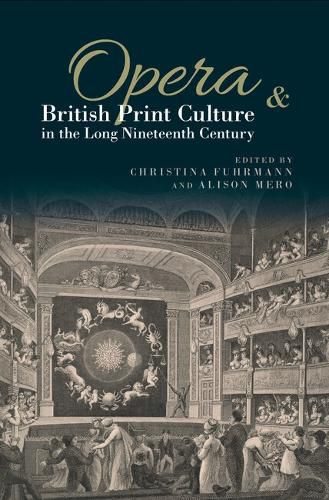Readings Newsletter
Become a Readings Member to make your shopping experience even easier.
Sign in or sign up for free!
You’re not far away from qualifying for FREE standard shipping within Australia
You’ve qualified for FREE standard shipping within Australia
The cart is loading…






Recently, studies of opera, of print culture, and of music in Britain in the long nineteenth century have proliferated. This essay collection explores the multiple point of interaction among these fields. Past scholarship often used print as a simple conduit for information about opera in Britain, but these essays demonstrate that print and opera existed in a more complex symbiosis.
This collection embeds opera within the culture of Britain in the long nineteenth century, a culture inundated by print. The essays explore: how print culture both disseminated and shaped operatic culture; how the businesses of opera production and publishing intertwined; how performers and impresarios used print culture to cultivate their public persona; how issues of nationalism, class, and gender impacted reception in the periodical press; and how opera intertwined with literature, not only drawing source material from novels and plays, but also as a plot element in literary works or as a point of friction in literary circles.
As the growth of digital humanities increases access to print sources, and as opera scholars move away from a focus on operas as isolated works, this study points the way forward to a richer understanding of the intersections between opera and print culture.
$9.00 standard shipping within Australia
FREE standard shipping within Australia for orders over $100.00
Express & International shipping calculated at checkout
Recently, studies of opera, of print culture, and of music in Britain in the long nineteenth century have proliferated. This essay collection explores the multiple point of interaction among these fields. Past scholarship often used print as a simple conduit for information about opera in Britain, but these essays demonstrate that print and opera existed in a more complex symbiosis.
This collection embeds opera within the culture of Britain in the long nineteenth century, a culture inundated by print. The essays explore: how print culture both disseminated and shaped operatic culture; how the businesses of opera production and publishing intertwined; how performers and impresarios used print culture to cultivate their public persona; how issues of nationalism, class, and gender impacted reception in the periodical press; and how opera intertwined with literature, not only drawing source material from novels and plays, but also as a plot element in literary works or as a point of friction in literary circles.
As the growth of digital humanities increases access to print sources, and as opera scholars move away from a focus on operas as isolated works, this study points the way forward to a richer understanding of the intersections between opera and print culture.